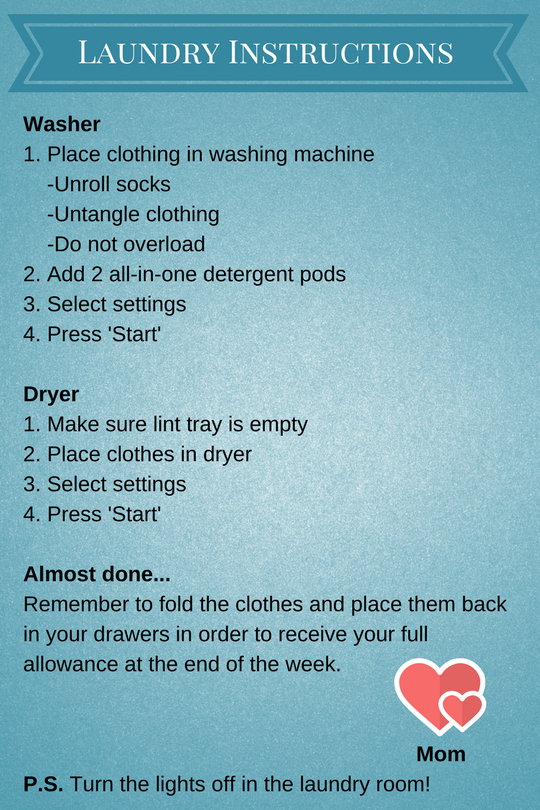
There comes a time when pre-teens are old enough to do their own laundry.
For some reason, washing clothes had become an every-other-day task at our house. So early this year I started including the laundry in the boys’ regular chores. I figured if they are old enough to fold their clothes and place them in the drawers, they can certainly wash them too. After all, this is a life skill they will have to learn at some point.
I guess I was trying to prevent the ‘Fred situation’ in their college years.

My intention was to make laundry an easy and somewhat fun teachable moment.
Here’s the list of steps I used to guide them through the process:
1. Undo the babushkas!
Awkwardly, sometimes the clothing is removed all at ounce, forming what I call the ‘babushka effect’, aka Russian nesting dolls. The underwear is still inside the pants and the undershirt inside the T-shirt, intact, in the hamper. The combined layers will not wash properly. So the layers need to be separated.
2. Unroll socks
Balls of socks do not wash well, nor do they dry well. So it’s well worth it to unroll them before adding them to the washer.
3. Avoid overloading the washer
Yes, it’s easy to do only one load, but if the load is too big, the clothes will not wash properly and you’ll have to do it all over again. So in order to avoid cramming everything in one load, do two loads instead.
4. Add detergent
Although there’s nothing wrong with liquid or powder detergents and fabric softeners, I find that all-in-one pods are more practical, especially for beginners. However, when using liquid detergents, read and follow the instructions on the containers. Being able to follow directions is an essential life skill (e.g. following a recipe, assembling furniture, etc.).
5. Adjust the settings
Make sure the correct program is selected …a teachable moment for water usage. Smaller loads need less water obviously, so no need to select the ‘large load’ setting and risk wasting more water then is needed.
6. Press the ‘Start’ button
Very important!
7. Remember to dry the clothes
Once the cycle is done, place the clothes in the dryer.
8. Check the lint tray
Make sure the lint tray is empty. It’s there to trap the lint produced by the clothes as they dry. If the tray remains full, it forces the dryer to work harder and use more energy.
Translation: More energy = Longer drying time = More money spent = Bad for family budget!
9. Adjust the settings.
Make sure the correct program is selected for the amount of wet clothes to be dried.
10. Press ‘Start.’
If the weather is warmer, then save on energy by hanging clothes outside instead of using the dryer.
To further simplify things, I posted this checklist in the laundry room to help the boys remember the sequence of steps to follow:

“Hunny, you’re old enough now to clean the bathroom” for when this happens.